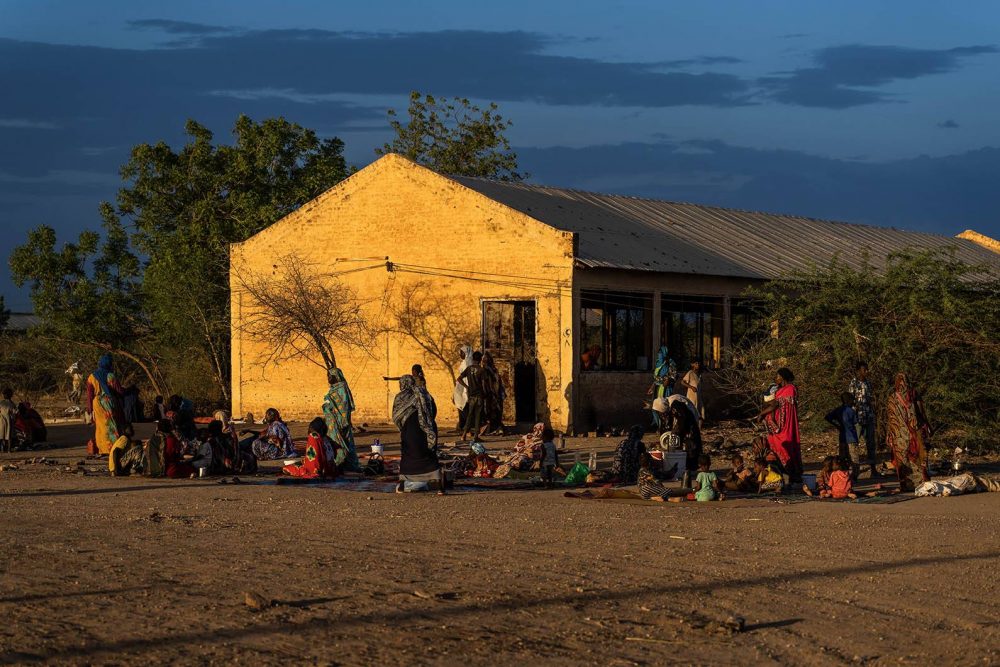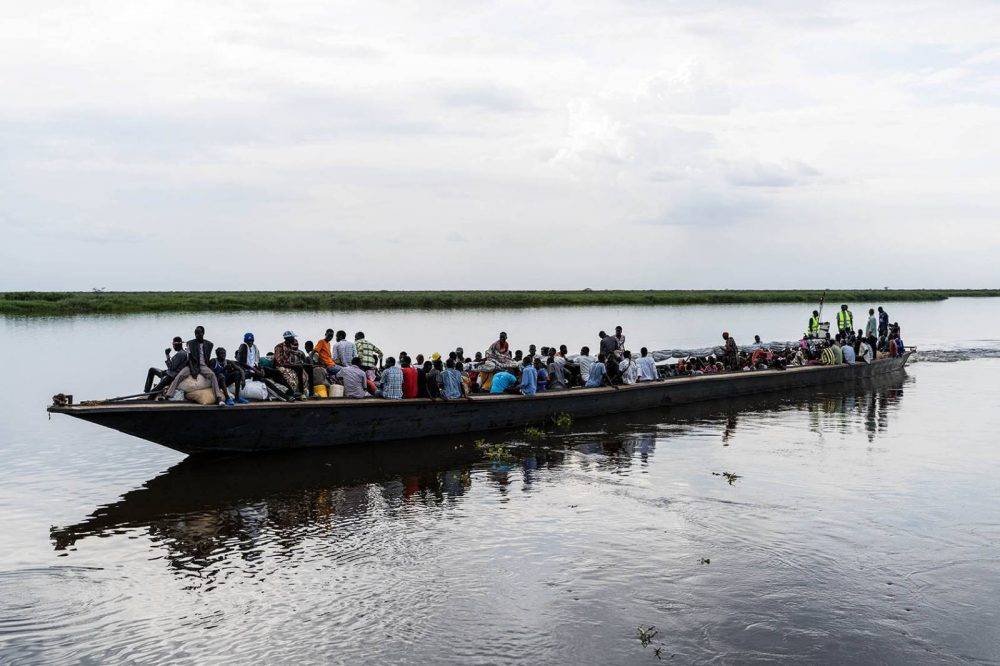A school in Gedarif became home to hundreds of families fleeing the war in Khartoum. Photos by Ala Kheir
In 2018, Ala Kheir asked his family to move from Khartoum to Cairo.
After settling them in an apartment in the Egyptian capital, he returned to Sudan with his camera to document the anti-government protests that were rippling across the country.
If anyone became angry with his work, they would not easily harm his family for it.
Those protests turned into a revolution.
Kheir recalls how hopeful Sudan was at the fall of dictator Omar al-Bashir in 2019, after three decades of dictatorial rule. Those hopes were dashed when the Transitional Military Council toppled the interim civilian government in 2021.
As citizens resisted what they saw as a coup in disguise, Kheir kept taking photographs. He was also working on a project that was close to his heart. Kheir’s parents had moved to Khartoum from Darfur in the 1990s, and he wanted to reconnect to his Darfuri roots.
“I was creating a series that told the story of Darfur 20 years after conflict,” he says.
Every month, Kheir travelled north to see his wife, sons and mother-in-law in Cairo for a few days before returning. His trip in March 2023 would be his last.
 People prepare to flee the war in Khartoum.
People prepare to flee the war in Khartoum.
The next month, the rift between Abdel Fattah al-Burhan and Mohamed Hamdan “Hemedti” Dagalo, the two generals on the Transitional Military Council, escalated into an all-out civil war.
Kheir was in Khartoum when the rival groups started exchanging salvos. Three weeks later, he fled the city.
“People were getting shot and killed in my neighbourhood streets, just near my apartment,” says Kheir. “The city was shutting down and there was no food, water or electricity. It was a very difficult time and I wanted to be near my parents. So, I went to them in Omdurman.”
Knowing there would be checkpoints on the way and that Sudanese soldiers wouldn’t take kindly to being documented, Kheir left his camera behind.
It was at these checkpoints that the severity of what was ahead for Sudan sunk in. There, he came face-to-face with some of the soldiers of Rapid Support Forces.
He describes the look in their eyes as “haunting” and “more terrifying than the dead bodies” he had seen strewn by the streets. They looked like people who were accustomed to killing; men fighting without a cause — without needing one.
“These are the same forces that have killed thousands of Darfuri people, looted communities and grabbed land since the conflict started in 2003,” he says.
“Seeing them at the checkpoints made it clear this war would not be over any time soon.”
 Refugees on the route from Renk to Malakal.
Refugees on the route from Renk to Malakal.
The United Nations Refugee Agency estimates that in its first year, the war has displaced eight million people and more than 14,000 have been killed. Furthermore, nearly half of Sudan’s population needs humanitarian aid as famine looms, yet only 6% of the funding for humanitarian response in the country has been raised.
The warring groups continue to block most corridors for delivering aid.
Kheir spent three months in Omdurman, Khartoum’s twin city, before setting off to find work in Sudan’s second largest city, Wad Madani. This is the capital of Al Jazirah, the east-central state straddling the Blue and White Nile.
Using a friend’s camera, he took assignments from NGOs to document the war.
But by November, he also wanted out.
Although travel between Egypt and Sudan was previously visa-free, authorities in Cairo had introduced new visa rules shortly after the war began, and were now turning away many Sudanese people.
It quickly became clear that Kheir could not rejoin his family in Cairo unless he paid the Egyptian government a security fee of $2,000 to $3,000.
Even then, he would only get a short term visa to stay as little as a week to three months — if he was lucky.
In theory, there was a cost-free visa option for Sudanese people but he and countless others were rejected each time they applied. This month he received his sixth rejection.
“Sometimes they refuse you right there and then, other times they ask you to come back after they have assessed your application, only to decline your entry without any explanation,” Kheir says. “The real reason that Egypt is afraid of letting us in is that there are already so many Sudanese people in the country.”
The UN refugees agency says that 300,000 Sudanese refugees have entered Egypt since April, and 250,000 more are waiting to join them. This week, the agency appealed for $175 million in aid to help maintain the support they are providing refugees.
Kheir eventually took a job in the United Arab Emirates, so that he could pay for the apartment in Cairo and support his parents and his younger brother, who remain in Sudan.
He tries to video call his family as much as possible. His eldest son is eight years old, and his youngest is two. He is distressed by the prospect of missing their formative years.
 A barge carries displaced families.
A barge carries displaced families.
“I try to help my eldest with his school work and other things virtually, to stay connected,” he says. But he does not know when he will see them again.
Kheir’s story is not unique. As the war rages on, The story of Sudan is of the loss of home, of family and of life.
But Kheir and other young revolutionaries like him have not given up hope. He dreams of going home, to Khartoum, and starting again.
“I loved exploring that city. Most of my personal photography was about connecting with it. My relationship with Khartoum goes deeper and remains special to me.”
This article first appeared in The Continent, the pan-African weekly newspaper produced in partnership with the Mail & Guardian. It’s designed to be read and shared on WhatsApp. Download your free copy at thecontinent.org